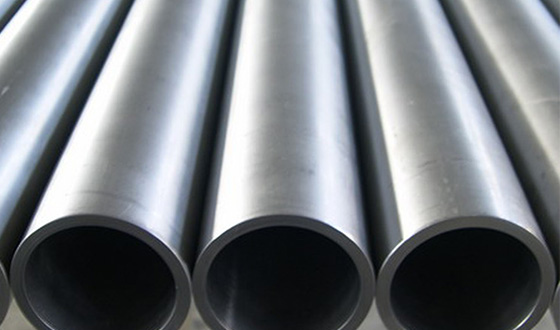-
Cangzhou Yulong Steel Co., Ltd.
-
Phone:
+86 13303177267 -
Email:
admin@ylsteelfittings.com
- English
- Arabic
- Italian
- Spanish
- Portuguese
- German
- kazakh
- Persian
- Greek
- French
- Russian
- Polish
- Thai
- Indonesian
- Vietnamese
- Zulu
- Korean
- Uzbek
- Hindi
- Serbian
- Malay
- Ukrainian
- Gujarati
- Haitian Creole
- hausa
- hawaiian
- Hebrew
- Miao
- Hungarian
- Icelandic
- igbo
- irish
- Japanese
- Javanese
- Kannada
- Khmer
- Rwandese
- Afrikaans
- Albanian
- Amharic
- Armenian
- Azerbaijani
- Basque
- Belarusian
- Bengali
- Bosnian
- Bulgarian
- Catalan
- Cebuano
- China
- China (Taiwan)
- Corsican
- Croatian
- Czech
- Danish
- Esperanto
- Estonian
- Finnish
- Frisian
- Galician
- Georgian
- Kurdish
- Kyrgyz
- Lao
- Latin
- Latvian
- Lithuanian
- Luxembourgish
- Macedonian
- Malgashi
- Malayalam
- Maltese
- Maori
- Marathi
- Mongolian
- Myanmar
- Nepali
- Norwegian
- Norwegian
- Occitan
- Pashto
- Dutch
- Punjabi
- Romanian
- Samoan
- Scottish Gaelic
- Sesotho
- Shona
- Sindhi
- Sinhala
- Slovak
- Slovenian
- Somali
- Sundanese
- Swahili
- Swedish
- Tagalog
- Tajik
- Tamil
- Tatar
- Telugu
- Turkish
- Turkmen
- Urdu
- Uighur
- Welsh
- Bantu
- Yiddish
- Yoruba

Oct . 21, 2024 17:21 Back to list
Exploring Various Flange Types Utilized in Piping Systems for Enhanced Performance
Different Types of Flanges Used in Piping
Flanges are essential components in piping systems, serving as crucial connectors between pipes, valves, and other equipment. They provide a reliable method of joining two piping sections while allowing for easy maintenance and access. This article explores the various types of flanges used in piping systems, their characteristics, and applications.
1. Weld Neck Flange
Weld neck flanges are designed to provide a strong connection by welding it directly to a pipe. They feature a long neck that helps with proper alignment during the welding process, which makes them ideal for high-pressure applications. The gradual transition in the flange's bore reduces stress concentration, making weld neck flanges suitable for critical services in industries such as oil and gas, chemical processing, and power generation.
2. Slip-On Flange
Slip-on flanges are easy to install and are commonly used in low-pressure applications. These flanges easily slip over the pipe ends, and then they are welded around the top for a secure connection. Their design allows for easy alignment, making them popular in construction and industrial piping. However, they should not be used in high-pressure scenarios due to their lower strength compared to weld neck flanges.
3. Blind Flange
Blind flanges are solid discs used to close off the ends of piping systems. They do not have a hole in the center, which prevents the flow of fluids or gases. These flanges are essential in systems that require future expansion or maintenance, as they can easily be removed when needed. Blind flanges are used in various industries, including water treatment, oil and gas, and HVAC systems.
different types of flanges used in piping

4. Socket Weld Flange
Socket weld flanges are used for connecting pipes in systems where the primary concern is space and weight. The pipe is inserted into the socket of the flange and then welded around the joint. This type of flange is suitable for high-pressure and high-temperature applications, often found in industries like petrochemical and shipbuilding. They are known for their strength and resistance to leaks.
5. Threaded Flange
Threaded flanges have internal threads that allow them to be screwed onto the pipe. This feature makes them easy to install without welding, making them ideal for applications in which welding is not a viable option. However, they are typically limited to low-pressure scenarios, as threaded connections can be weaker and more prone to leaks.
6. Lapped Joint Flange
Lapped joint flanges consist of two components a stub end and a loose flange. The stub end is welded to the pipe, while the loose flange can be bolted onto it. This design allows for easy assembly and disassembly, making lapped joint flanges suitable for applications requiring frequent maintenance. They are often used in low-pressure systems and in industries like pulp and paper milling.
Conclusion
Understanding the different types of flanges is vital for engineers and maintenance personnel involved in the design and upkeep of piping systems. Each type of flange has specific characteristics that make it suitable for particular applications, enabling versatility and convenience in various industrial processes. Proper selection of flanges not only ensures the integrity and efficiency of piping systems but also contributes to safety and reliability in operations across multiple sectors. By considering factors such as pressure, temperature, and the nature of the fluids being transported, one can make informed decisions that optimize performance and longevity in piping applications.
Latest news
-
ANSI 150P SS304 SO FLANGE
NewsFeb.14,2025
-
ASTM A333GR6 STEEL PIPE
NewsJan.20,2025
-
ANSI B16.5 WELDING NECK FLANGE
NewsJan.15,2026
-
ANSI B16.5 SLIP-ON FLANGE
NewsApr.19,2024
-
SABS 1123 FLANGE
NewsJan.15,2025
-
DIN86044 PLATE FLANGE
NewsApr.19,2024
-
DIN2527 BLIND FLANGE
NewsApr.12,2024
-
JIS B2311 Butt-Welding Fittings LR/SR 45°/90° /180°Seamless/Weld
NewsApr.23,2024











